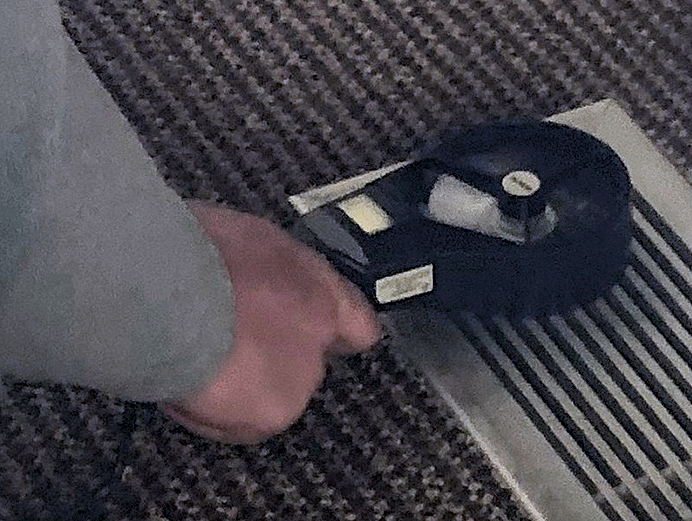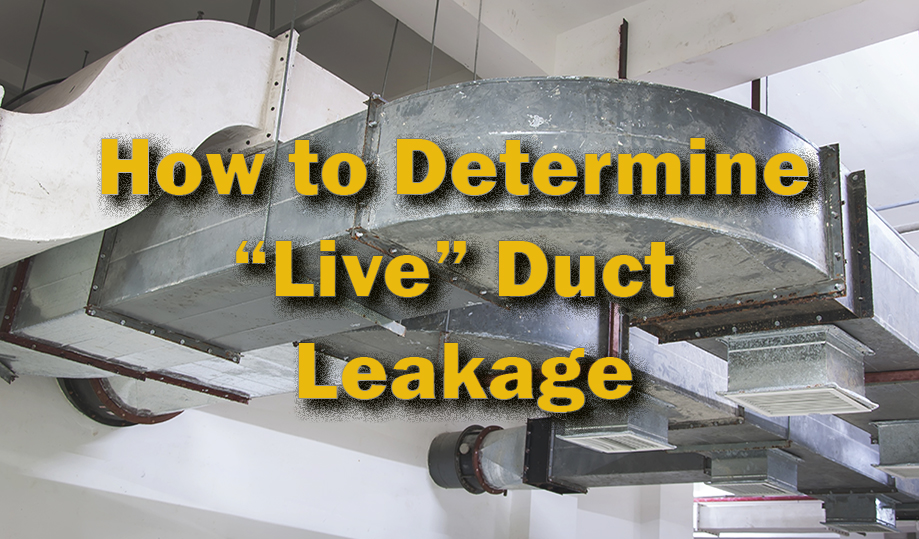That’s an over-simplification. The standard states that to ensure accuracy, the technician performing the test must take 20 balancing hood readings at one-second intervals at every inlet or outlet on the tested system. Let that sink in.
One requirement of the ASHRAE Standard that I agree with is all equipment in use is in current, NIST-traceable calibration.
To simplify the duct leakage testing process, use the following eight steps:
- Find an appropriate duct traverse location. Ten duct diameters are text-book. However, in the real world, that’s hard to find. The next best option is 80% downstream from any transition, regardless of how much straight duct is available
- Take a duct traverse using either the Equal Area (ncilink.com/EqualArea) or Log-Tchebycheff (ncilink.com/LogDefinition) method. Both National Comfort Institute and National Balancing Council recommend the Equal Area method for simplicity and repeatability
- Assure your data meets the ASHRAE 111 ?75% Rule.’ That is when 75% of the readings are between the highest reading and 10% of the highest reading
- Read the inlets/outlets with a calibrated balancing hood
- Traverse any inaccessible inlet/outlet with a balancing hood
- Subtract the inlet/outlet readings from the duct traverse
- The difference is the amount of duct leakage
- Divide the inlet/outlet readings by the duct traverse to determine the percent of duct leakage.

Duct Sealing
NCI takes the following four-step approach towards duct sealing:
- First, Test the duct system
- Second, Renovate/upsize the duct system
- Third, Seal the duct system where testing indicates
- Fourth, Add insulation where testing indicates.
Duct system renovation, sealing, and insulation by themselves only address some issues. You must consider how all of these aspects work together for the best results.
ASHRAE 221 proves that duct leakage only addresses one-third of HVAC problems.
Thermal loss, or heat loss/heat gain, is another major issue attributed to duct leakage. The first law of Thermodynamics is that heat flows to cold. Hence the terms ‘Heat Gain’ in summer HVAC operation and ‘Heat Loss’ during winter HVAC Operation.
Because duct leakage is often only PART of the problem, it takes comprehensive, surgical, yet simple testing to indicate which issue is the criminal element at play.
Communicating Properly
There are a few notes that every contractor should be aware of when determining live duct leakage. When talking about duct leakage, no matter how you present the data, all the installing contractor hears is ‘the Testing, Adjusting, Balancing (TAB) contractor is saying I did not do my job.’
For example, you tell them, ‘I took a duct traverse with a calibrated instrument, and I am reading 1,000 CFM leaving the unit, yet I am reading 800 CFM at the supply outlets.’ They don’t hear that.
I’ve dealt with this HUNDREDS OF TIMES, and sometimes the issues are due to poor installation, sometimes not. The point is as the TAB contractor; you need to be careful how you present your data.
Sometimes the installing contractor performed their job correctly, but other trades used the ductwork as load-bearing scaffolding. When you have a 250-pound electrician, or building automation guy walking on the ductwork, it won’t function the same, will it?
If someone insists you’ve dampered the system down from 1000 to 800 CFM, you should know that is physically impossible. Yet, people often perceive it that way. If airflow goes into the unit, it comes out of the unit. When it doesn’t flow out of the supply registers, airflow may be above the ceiling.
When your inlet/outlet readings are higher than your unit duct traverse, recheck your readings.
So, You Have Duct Leakage. Now What?
Test the Duct System: Multiple national surveys indicate that hundreds of contractors conduct audits. They test thousands of systems and have documented and proven that most duct systems are undersized.
Click Below to go to the Next Page:













Recent Comments